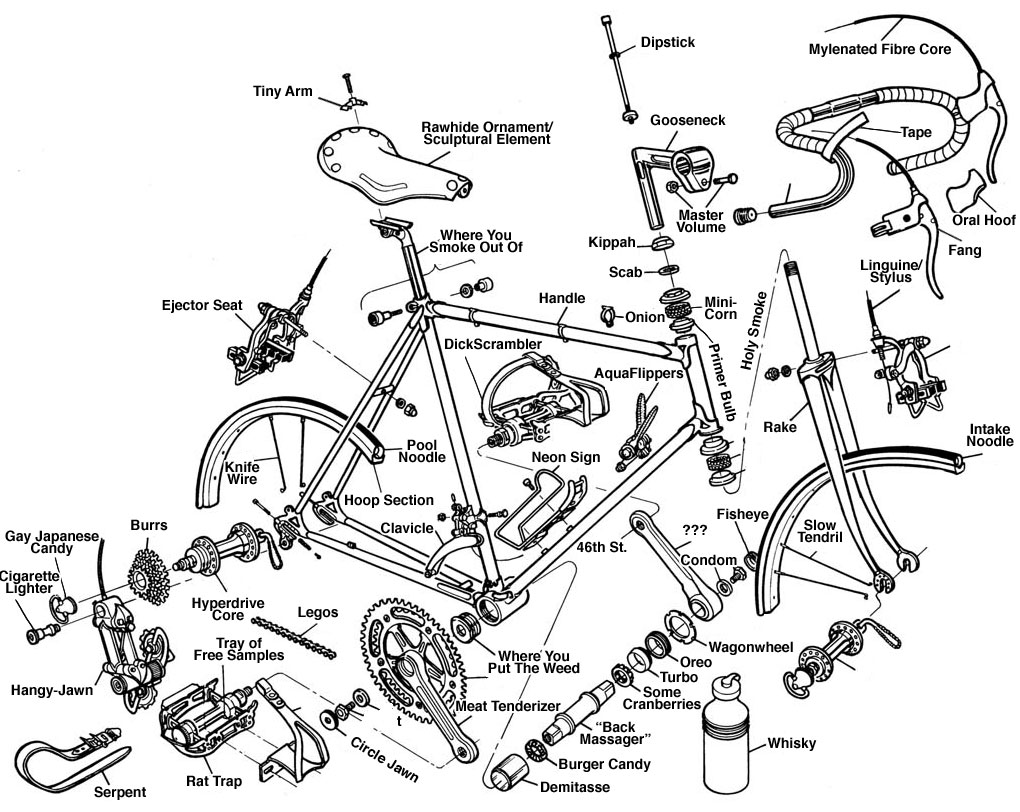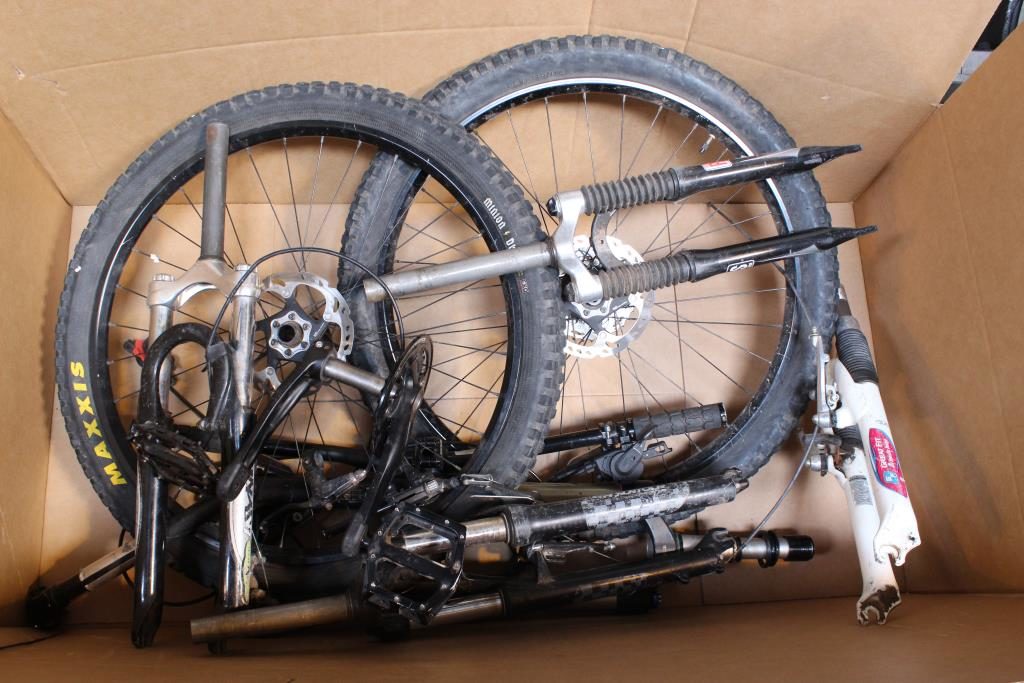Barton Haynes here in sunny San Diego. I’ve recently starting planning for building my new bike and buying parts, and wanted to share what my priorities are.

List of Bike Pieces
Here’s how I think about buying new parts:
- Body
- Rims
- Handlebars/seat
- Crankset and pedals
- Gear levers and cables
- Cassette and chain
You can probably dice this list up and organize more specifically, but these are my main concerns and how I go about making purchases.
Budgeting Parts for a New Bike
Here is how I like to distribute my spending across my bike – other cyclists might wildly disagree, but this is where I feel I am getting the most bang for my buck:
- 35% towards body
- 20% towards rims
- 10% towards handlebars/seat
- 15% towards crankset and pedals
- 5% towards gear levers/cables
- 20% towards cassette and chain
Some people might balk at how much I allocate towards handlebars/seat, but think again: they are what you sit on and hold on to, and to me it’s well worth the money to buy top of the line equipment. The body is obviously important, but at a certain point you can spend a lot extra money for a body that is only very slightly lighter than one that costs a lot less.
People might spend less on rims than I do but: I’m fairly tall and bulky and want strong top of the line rims (I’ve had rims go bad a couple of times during races and vowed never to let that happen again), and good rims look cool!
Planning and Buying Parts for a New Bike

My process is easy:
- Establish what budget I’m comfortable with spending, and subtract 10%: that’s the budget I use, and the extra 10% is contingency money because there are always – I repeat always – additional expenses
- Using the percentage distribution above, I begin doing research (reading forums, blogs) about the best equipment I can find that suits my needs and is within my price range
- Using the percentage distribution above, I create my spreadsheet and shop around for each type of equipment based on my research
- When I lock on to the brand and type of equipment I want, I track the cost (with link to lowest price) in a spreadsheet
- When I have everything picked out, I make sure it is within my set budget, and then I make the purchases
- After I put my bike together, I use the extra 10% contingency money to pay for all of things I may have forgotten or needed additionally, such as:
- Money for servicing the bike before riding
- Money for adjustments (to get the perfect fit) at my local bike shop
- Money for additional odds and ends – more bike lube, extra cabling, etc.
Seriously, the contingency money is extremely important. Nothing is more frustrating than spending all of your budget, getting your bike put together, and then needing another $500 dollars for all of the little things that creep up (these “creep ups” have a way of being more expensive the more you spend on your bike.
For serious riders like myself, I think that around $5k is a good price point to try and hit to get really high quality equipment without spending a lot on things you probably don’t need. Can you easily spend double, triple, or even a lot more on your bike? Of course. Will it greatly benefit you? Unless you are a professional, then no.
